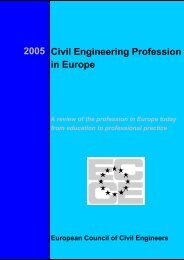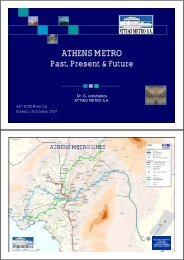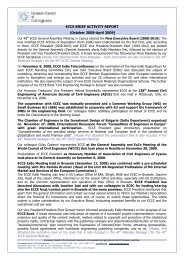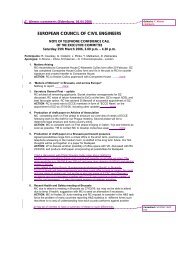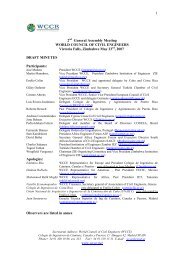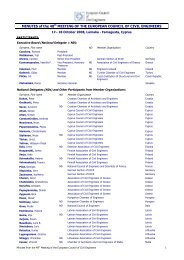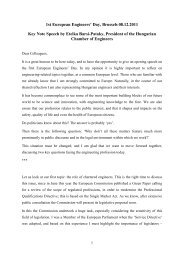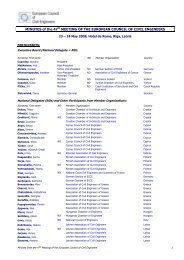A Closer Look at Prevailing Civil Engineering Practice - European ...
A Closer Look at Prevailing Civil Engineering Practice - European ...
A Closer Look at Prevailing Civil Engineering Practice - European ...
Create successful ePaper yourself
Turn your PDF publications into a flip-book with our unique Google optimized e-Paper software.
A <strong>Closer</strong> <strong>Look</strong> <strong>at</strong> <strong>Prevailing</strong> <strong>Civil</strong> <strong>Engineering</strong> <strong>Practice</strong>, Wh<strong>at</strong>, Why and How<br />
Vincent T. H. CHU<br />
Wet-mix method involves the pumping of ready mixed concrete to the<br />
nozzle. Compressed air is introduced <strong>at</strong> the nozzle to impel the mixture<br />
onto the receiving surface. The wet-mix method is more favorable for large<br />
volume placements. Rebound is less than in the dry-mix method. The<br />
nozzleman does not need to be concerned with the control on w<strong>at</strong>er<br />
addition.<br />
20. Wh<strong>at</strong> is the difference between no-fines concrete, lightweight<br />
concrete and lean concrete<br />
Pervious concrete is sometimes called "no fines" concrete. It is designed<br />
with high porosity and allows w<strong>at</strong>er to pass though. It is commonly used in<br />
concrete pavement so as to reduce surface runoff and allow the recharging<br />
of ground w<strong>at</strong>er. The high porosity is achieved by a network of<br />
interconnected void. "No fines" concrete has little or no fines and contains<br />
just enough cement paste to cover the surface of coarse aggreg<strong>at</strong>es while<br />
maintaining the interconnectivity of voids.<br />
Lightweight concrete is characterized by low density (1,400kg/m 3 to 1,800<br />
kg/m 3 ) and is made of lightweight coarse aggreg<strong>at</strong>es. In some cases, even<br />
the fine aggreg<strong>at</strong>es are also lightweight too. The primary use of lightweight<br />
concrete is to reduce the dead load of concrete structures.<br />
Lean concrete, which is also known as cement bound m<strong>at</strong>erial, has low<br />
cementitious m<strong>at</strong>erial content. It has low concrete strength and is<br />
commonly used as roadbase m<strong>at</strong>erial.<br />
21. Wh<strong>at</strong> is the purpose of applying sp<strong>at</strong>terdash before rendering and<br />
plastering<br />
Sp<strong>at</strong>terdash is a mixture of one part of cement to one and a half parts of<br />
coarse sand with enough w<strong>at</strong>er. The mixture is thrown forcibly onto the wall<br />
so th<strong>at</strong> the impact removes the w<strong>at</strong>er film <strong>at</strong> the interface between<br />
sp<strong>at</strong>terdash and the substr<strong>at</strong>e leading to the improvement in adhesion. The<br />
sp<strong>at</strong>terdash should cover the substr<strong>at</strong>e surface completely and form a<br />
rough texture. Sp<strong>at</strong>terdash serves as an effective mechanical key to<br />
prevent rendering and plastering m<strong>at</strong>erial from sliding or sagging. The<br />
roughness of sp<strong>at</strong>terdash improves adhesion by providing a positive “key”<br />
for plaster to grip. The improper applic<strong>at</strong>ion of sp<strong>at</strong>terdash affects the<br />
subsequent bonding of rendering with substr<strong>at</strong>e.<br />
21




